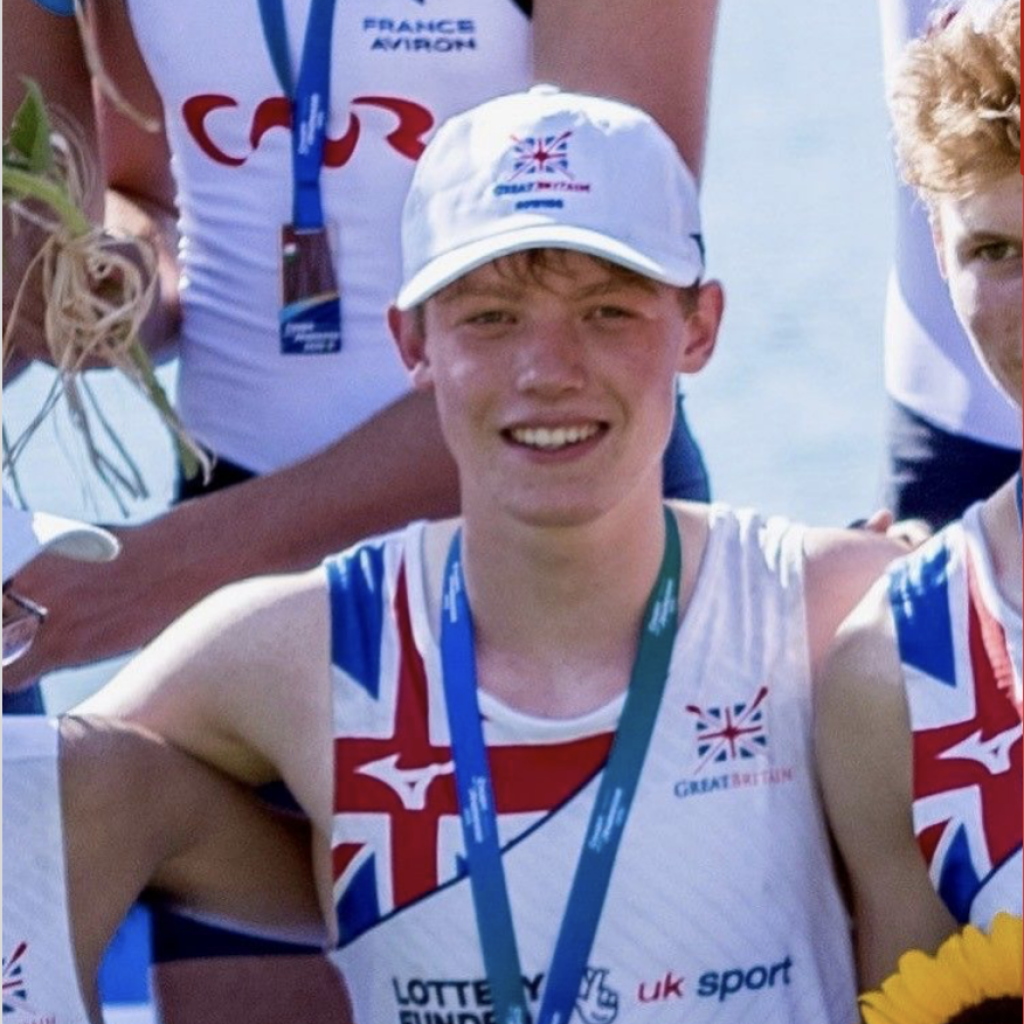Brand Leadership lessons from high performance rowing
Guest post with brandgym intern Calum Betteley, who shares brand leadership learning from his experience as an elite rower. Calum rowed for team GB in the Junior European Championships in 2019 where he won Gold and Silver!

1. Highlight and build on your strengths
One of the most important things in elite sports like rowing is being clear about your strengths. This gives you an advantage and makes you stick out in the eyes of the selectors. As Eddie Jones, the England rugby coach, commented in an interview, “You work out as you coach that there’s no perfect player. The big thing is to coach players to their strengths.” (1).
In my own case, my power-to-weight ratio and technique are an edge compared to stronger, more physical athletes. I’m not right at the top in raw power measured on a static rowing machine. But I’m lighter than many other rowers, weighing the boat down less. So, I create reduced water resistance while transferring the power I do have into the water. My task is to keep working on my strength, but remain relatively light and technically sufficient.
Brand leadership action: work on highlighting your own personal strengths and then develop a plan to develop them and turn them into ‘super strengths’.
2. Set big, bold goals…
It’s important to have the prize in sight. Without clear goals, elite sportspeople can get demotivated. This is especially true in a brutally demanding sport like rowing, where we practice 10 times a week, several hours at a time. When rowing for my school, King’s College Wimbledon, we came together as a crew to set our main goal for the season. We singled out Henley Royal regatta as our target. This is one of the most prestigious races in rowing, with crews from all over the world competing. This target kept us all driven towards the same goal, allowing momentum to build as we saw improvements. It kept us all motivated, making the early morning sessions just that little bit easier!
Brand leadership action: ensure you have set and aligned the whole team behind a clear long term ambition for your brand and business
3… then break them down into smaller goals
One of the keys to success in rowing is breaking a race down into small steps. It is such a physically and mentally exhausting sport that the endpoint of a race can seem daunting. One trick is to break a race down into smaller, more manageable portions. This allows you to really focus on the present. For example, on an ergo (static rowing machine) data screens giving you feedback on every stroke, as well as your average split time per 500 metres. Breaking down the challenge like this allows you to see each stroke as a singular task. Momentum starts to build as you take the smaller steps towards the larger goal.
Brand leadership action: take your big and bold brand ambition and break it down into smaller, achievable sub-goals, by year and by quarter, for example.
4. Build your adaptability
You prepare for a rowing race with a plan of how you want to compete. But in all elite sports there are elements that you cannot control, especially the opposition. A key quality of an elite athlete is, therefore, how you deal with these uncontrollable variables.
Our coaches try to build what they call ‘adaptability’ by throwing some ‘organised chaos’ into our practices! For example, our coach would run a training session with 3 minute blocks of activity, but where the number of blocks (ranging from 5 up to 15) was not revealed. This practice helped us learn how to not panic when faced with an unpredictable and unclear situation.
Brand leadership action: you can work on adaptability by running competitor ‘war games’. Create possible future scenarios, and how you as a brand might respond. This will give you some possible future tactics but also get you into the habit of responding rapidly to marketplace changes.
5. Learn to work in sync
More than almost any other sport, rowing is about working together ‘in sync’. To get the most speed, up to eight rowers must be on the same page at all points of a race. This means being crystal clear about individual roles AND having a strong leader of the crew: the cox. You might think they have an easy job, just sitting and steering. I admit, before starting rowing, that’s what I thought!) But arguably, they have the most important job: to motivate and unify the crew.
Rowing for Great Britain at the Junior European Championships opened my eyes to how much effort being a cox is. He had to bring together eight athletes from different schools and organise us into a crew that could win gold. He also supplied the tools and inspiration to keep us motivated during two long months of training. Earning the trust of the crew during this period meant we followed without question the calls he made during the race, helping us finish as fast as possible.
Brand leadership action: be clear on who is leading on any given project and be sure everyone is clear on their roles. Sounds obvious, but doesn’t always happen!
In conclusion, whilst a very different world, elite rowing does have some useful lessons for success in brand leadership. Set big goals and break these down into smaller steps. Then, have clear roles for everyone so they can work in sync.
To further explore brand leadership inspired by sport, see the following posts:
LEADERSHIP LESSONS FROM THE BRITISH LIONS Rugby Team
LESSONS in LEADERSHIP FROM EDDIE JONES AND ENGLAND RUGBY
WHAT CAN BOXING TEACH US ABOUT BUSINESS?
LEADERSHIP LESSONS FROM LEICESTER CITY’S LEAGUE WIN


